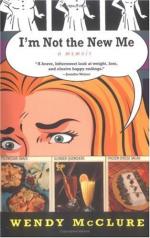Could it be true? she asked herself, and shut her eyes; then glanced again, then looked at her brothers, who were both silent, Theodore smiling with joy, while Lucas looked gravely down at her.
“Oh, Lucas!” she cried, throwing her arms around his neck, “you done this for me!”
“I told you I was sorry, Armidy,” he said.
SCIENTIFIC KITE-FLYING.
BY CLEVELAND MOFFETT.
On the long peninsula that separates New York Bay from Newark Bay, there is, among other things, a red house by an open field, in which lives the king of kite-flyers. Every one in Bayonne, the town which covers this peninsula, knows the red house by the open field; for scarcely a day passes, winter or summer, that kites are not seen sailing above this spot—sometimes a solitary “hurricane flyer,” when the wind is sweeping in strong from the ocean; sometimes a tandem string of seven or eight six-footers, each one fastened to the main line by its separate cord. And wonderful are the feats in kite-illumination accomplished by Mr. Eddy (the king aforesaid) on holiday nights, especially on the Fourth of July, when he keeps the sky ablaze with gracefully waving meteors, to the profound awe or admiration of his fellow-townsmen.
If you enter the red house and show a proper interest in the subject, Mr. Eddy will take you up to his kite-room, where skyflyers of all sorts, sizes, and materials range the walls—from the tiniest, made of tissue paper, to nine-footers, with lath frames and oil-cloth coverings. Hanging from the ceiling is one of the queer Hargrave kites, which looks like a double box, and seems as little likely to fly as a full-legged dining-table; yet fly it will, and beautifully too, though by a principle of aeroplanes only recently understood.
Then Mr. Eddy will show you the room where, with the help of his deft-fingered wife, also a kite enthusiast, he spends many hours developing and mounting photographs taken from high altitudes, with a camera especially constructed to be swung and operated from the kite cord.
Until one talks with a man like Mr. Eddy—though, indeed, there is no one just like him—one does not realize what a large and important subject this of scientific kite-flying is. Many men of distinction have devoted years of their best energies to experiments with kites. Mr. Eddy himself is a scientist first, last, and always; for the sake of a new observation he will send up a tandem of kites when the thermometer is below zero, or stand half a night at his reeling apparatus, getting records of the thermograph.
[Illustration: HARGRAVE LIFTED SIXTEEN FEET FROM THE GROUND BY A TANDEM OF HIS BOX-KITES.]




